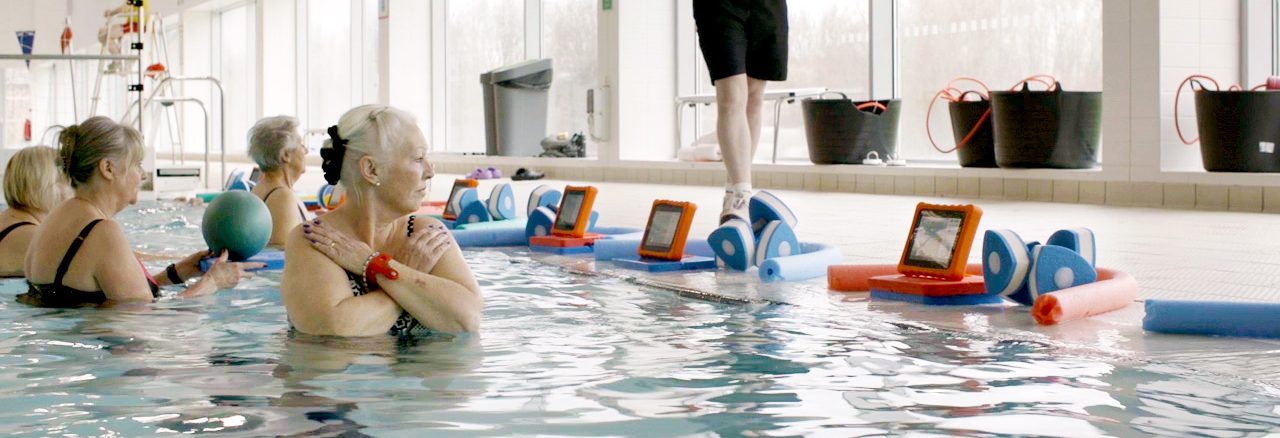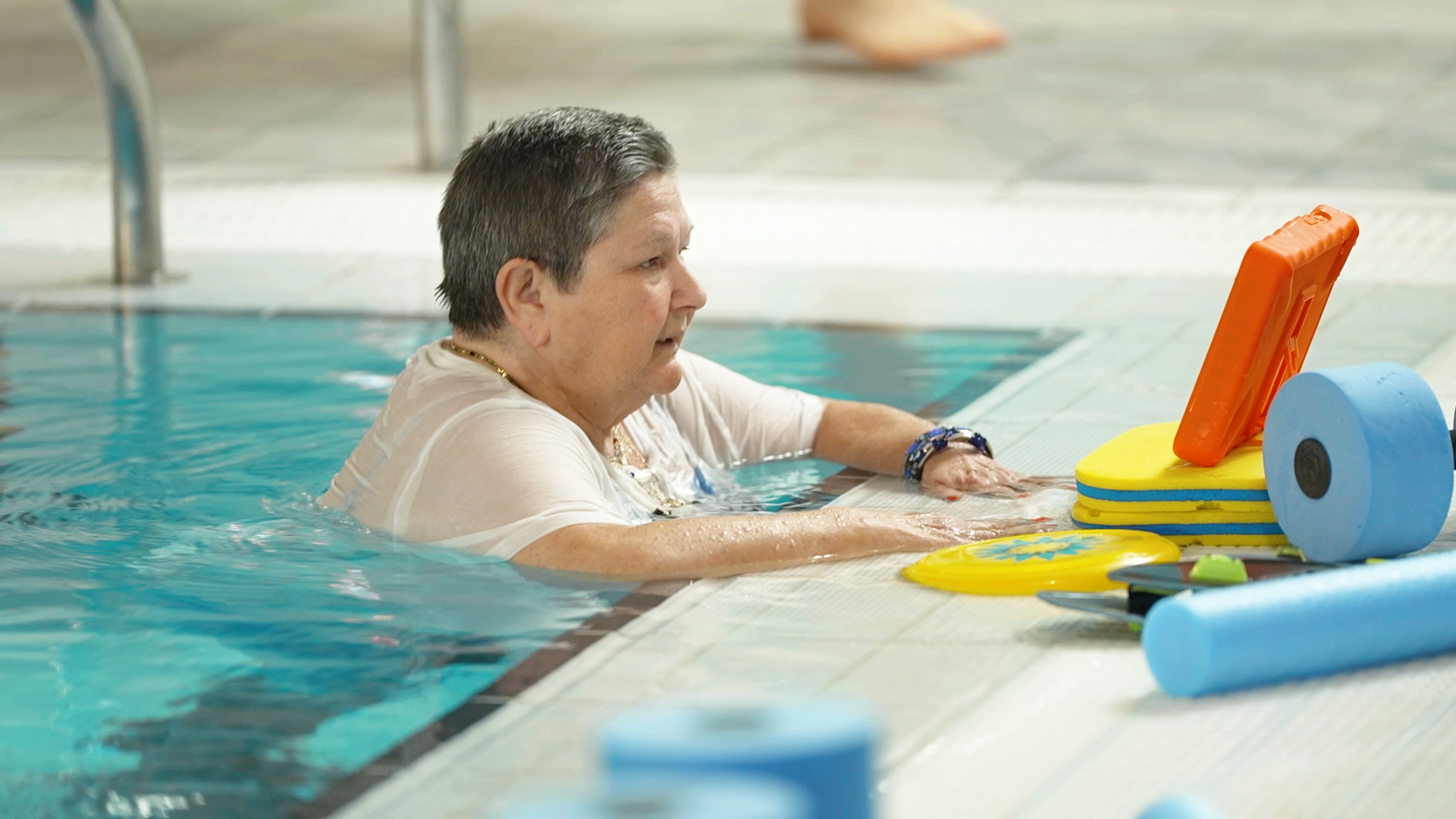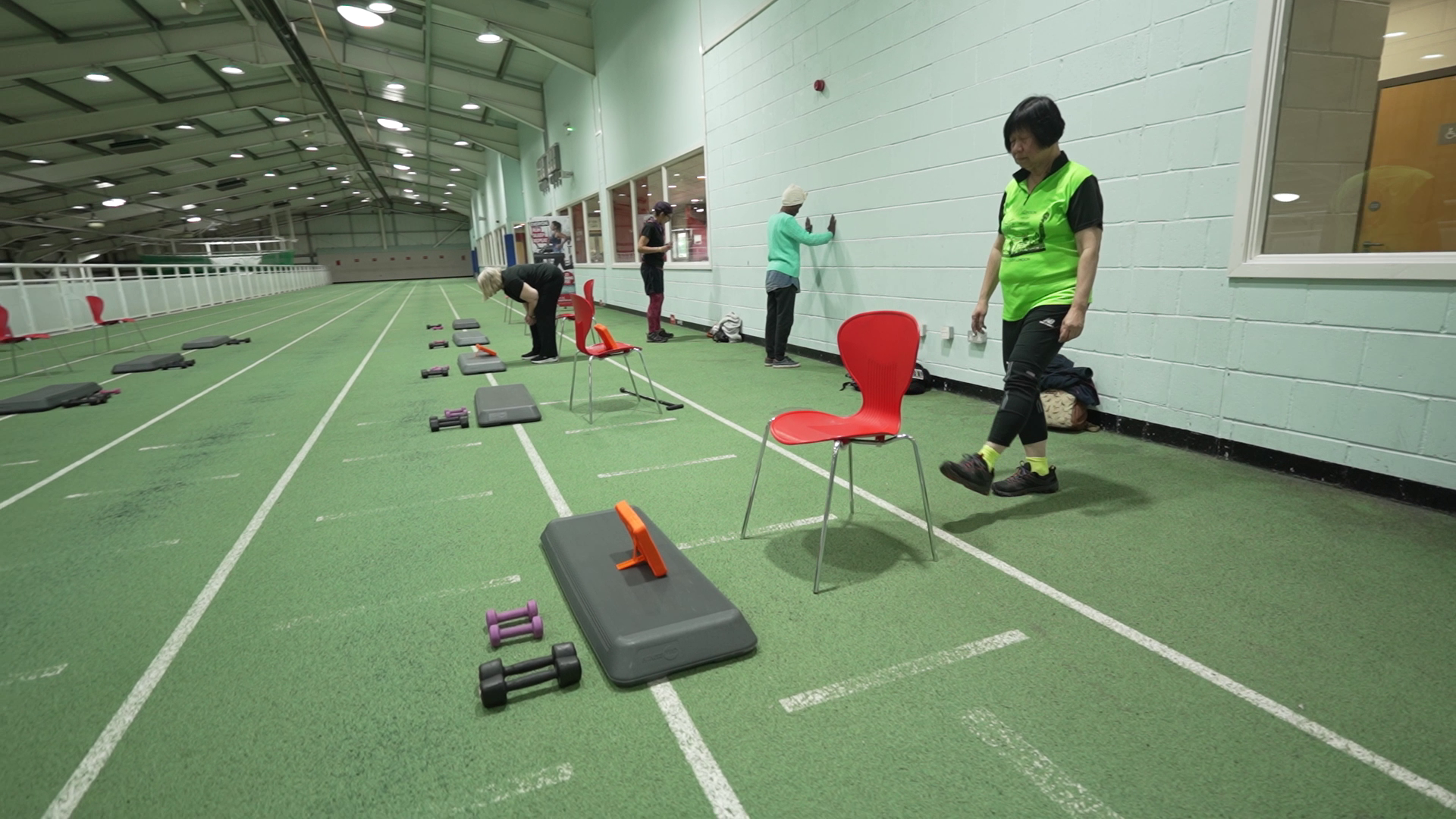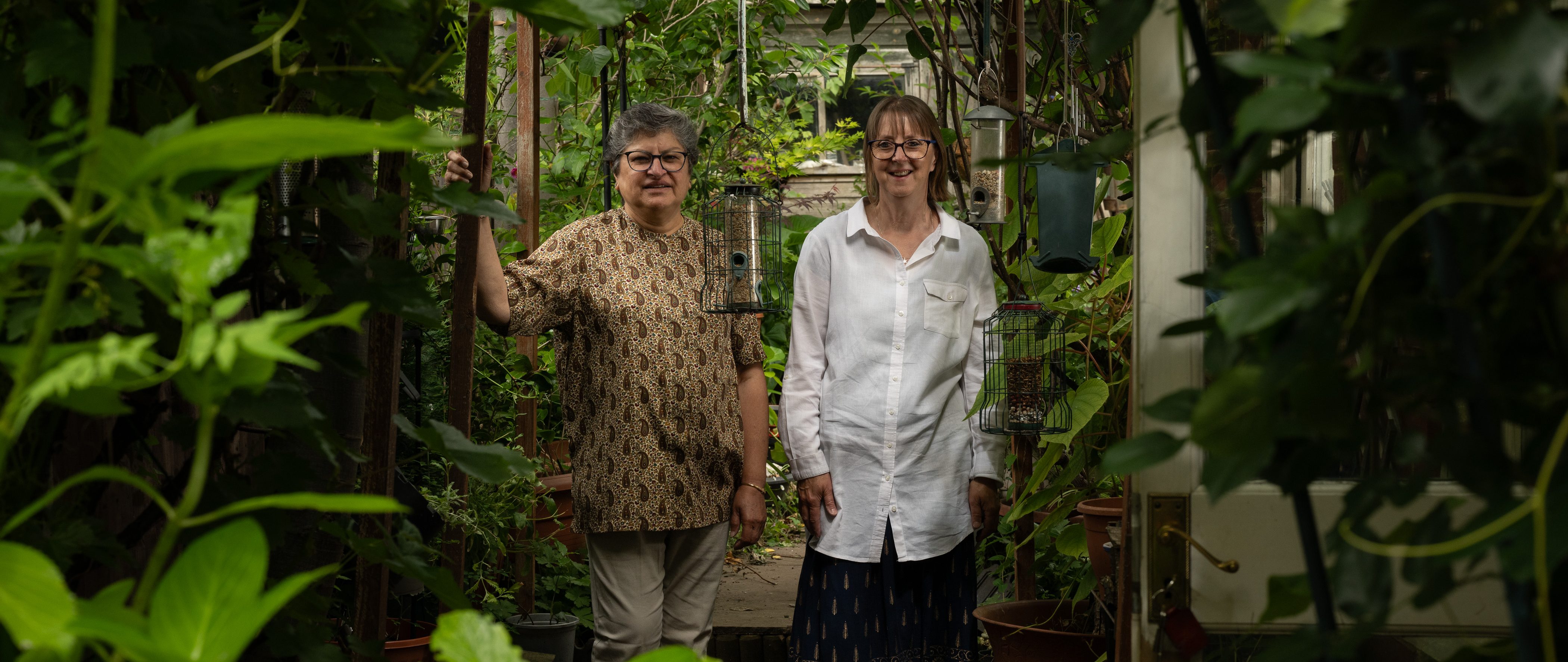Ben’s journey began with a realisation: traditional healthcare systems we’re falling short in addressing the needs of individuals with musculoskeletal (MSK) issues. “I knew this firsthand from the struggles with finding MSK support for my mum’s arthritis and, in fact, getting physio support for myself when I had a snowboarding accident,” Ben explained. The lack of provision was further highlighted during his work with charities in Oxford. “Patients waiting for hip and knee replacements were being told by consultants and physiotherapists to increase their activity before surgery, improve their physical function and strength,” Ben continued. “But the thing was, that these people could hardly walk. That was the reason they were going in for surgery! These people were struggling to walk, never mind doing anything to do with strength and conditioning.”
I started to ask, 'Why can't I do something about this?' That was the lightbulb moment that started me off.
During Ben’s placement in a hydrotherapy pool, he had discovered the immense potential of water for rehabilitation. However, accessibility and cost proved to be significant barriers to widespread adoption. “There was a local swimming pool less than 1 mile away from the hospital where the operations were taking place in Oxford,” Ben explained. “I couldn’t understand why that local swimming pool wasn’t being used. The patients would have gone to the pool, but they didn’t know what to do; they were nervous and anxious. However, there was a real affinity to activities in water.”
“I started to ask, ‘Why can’t I do something about this?’ That was the lightbulb moment that started me off. It was low tech, no tech, in fact, when we started. Nothing like we have now. It was laminated exercise cards that I had made in my living room. I put up some posters, did some social media, saying I was going to run a 12-week pilot for anyone who is interested. And people showed up.”
Through this grassroots initiative, Ben tested the core idea of providing group sessions in the local swimming pool tailored to the individual needs of participants. The overwhelming response validated his vision: there was a clear demand for accessible and personalised aquatic therapy.
But every entrepreneurial saga is fraught with challenges, and Good Boost is no exception. Ben shared the initial resistance he encountered. “Before the first session, we almost cancelled it. We received an email from a very senior physiotherapist working in the local hospital (they must have seen something on social media or one of our posters) saying, “You aren’t allowed to do this. This isn’t suitable. You can’t promote this programme!”‘
Curious about the reasons behind this pushback, I asked Ben for more information. “The interpretation was that it was defamation to the NHS because we put into our marketing that due to difficulties accessing the NHS Hydro pool, we are running this pilot to make it available to everyone in the community,” Ben explained. “They were saying that people can access the hydro pool, but having had a knee replacement operation doesn’t fit the NHS criteria to use this pool. It was an ongoing back and forth conversation. I was a fully trained, fully insured clinician; I could run group exercises. I asked to meet them to talk it through, but nothing. We weren’t charging, we had completed risk assessments, worked with the leisure centre, considered accessibility, had a hoist – we had thought of everything. And yet, we were challenged straight away by a senior clinician. I almost didn’t go through with it!”
I asked Ben if he thinks that this type of fear of challenging the status quo cripples so much innovation that could be helping us all. “It does!” Ben agreed passionately. “What was the risk? We were helping those who had been advised by their consultants to do exercise, and we were giving them a safe, supported and tailored way to do it! These people had restrictions, but we wanted to create a supportive place to help them.”
When asked what the next challenge was when he thought, ‘this is tough,’ Ben says, “Without a doubt, it was how can we can make this scalable.” He continues, “We were building a service that, at the end of the pilot, participants said they didn’t want the classes to stop, stating that they would pay to come along and could we keep on doing it. So we did. And then we found out that people were traveling a long way to come to the classes, so we thought we would try another location. It was a nightmare! Trying to get a local physio to attend, they would cancel as they were delayed at their clinic, people got let down, and classes weren’t running. We had a scalability challenge.”
Despite being almost stopped in his tracks by a senior physiotherapist initially, Good Boost persevered and started collaborating with NHS. They wrote up a case study together, which was published, giving Good Boost credibility and approval that this was a programme which could and should be developed and which made an impact. Over time, this led to more and more NHS partners buying the programme and delivering it or creating signposting so that patients are aware of it. And this is building and building, paving the way for widespread adoption across the UK.”
"We now have over 10,000 people registered for Good Boost in total. The vast majority are over 60, but we have people in their teens and 20s using it too, all the way up to their 90s. And we’ve delivered in 200 locations now."
“We now have over 10,000 people registered for Good Boost in total. The vast majority are over 60, but we have people in their teens and 20s using it too, all the way up to their 90s. And we’ve delivered in 200 locations now,” Ben shares proudly. Reflecting on the impact that he has made on people’s lives, he adds, “Our true measure of success lies in the transformative stories of our participants, from regaining mobility to rediscovering joy in daily activities.”
When asked about surprising insights gained along the way from working with real people, Ben reflected, “Being told that things like humor are a motivator. Building in laughter and fun into our programmes. We had one participant who said she would never climb a mountain, but that sparked something with us and helped us come up with a concept for our motivational element in the app. So now in the app, you can set that you want to climb Ben Nevis, and even though you are exercising in water, we have calculated how far you would be up Ben Nevis even in the water. That idea was from listening to people who are using Good Boost.”
He continued, “Also, I would say that co-designing is a science and an art. It is so important to spend time, quality, and deep time with people, groups, and individuals. Co-design can be a tick box exercise, and what is important is committing to it. Over the last 6 years, we have committed to going deep and going broad. Going deep to get the lived experience insights which we wouldn’t have without listening to real people and what they needed and wanted. These insights form the heart of the community which are looking to support are incredibly important.” He goes on to say, “To do co-design well and to do it right brings out so many gold nuggets. Diamonds can come out of mud. Co-design done well has brought out some of our most successful feature developments. These were not our ideas; these were ideas from the beneficiaries of Good Boost.”
As we concluded our conversation, I ask Ben’s about his ambition. “World domination,” he declared with a smile, “not for the sake of dominance, but to dismantle barriers to physical activity and enhance quality of life.” He also shared his excitement about his collaboration with NICA’s UK-China Healthy Ageing Programme, where he’s exploring opportunities to expand Good Boost’s impact into China. I, for one, have no doubts that the world will soon know about Good Boost.

 &
& 






